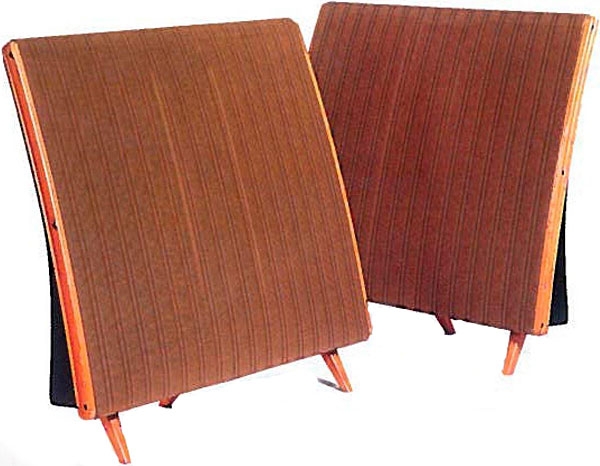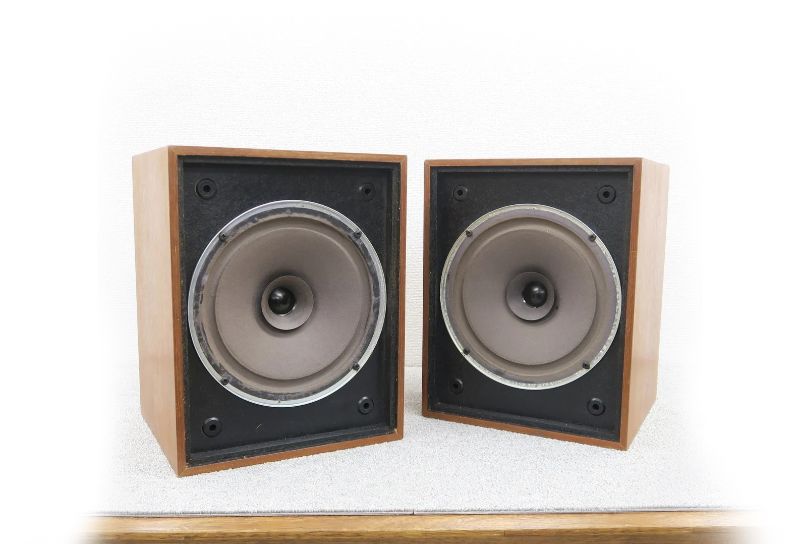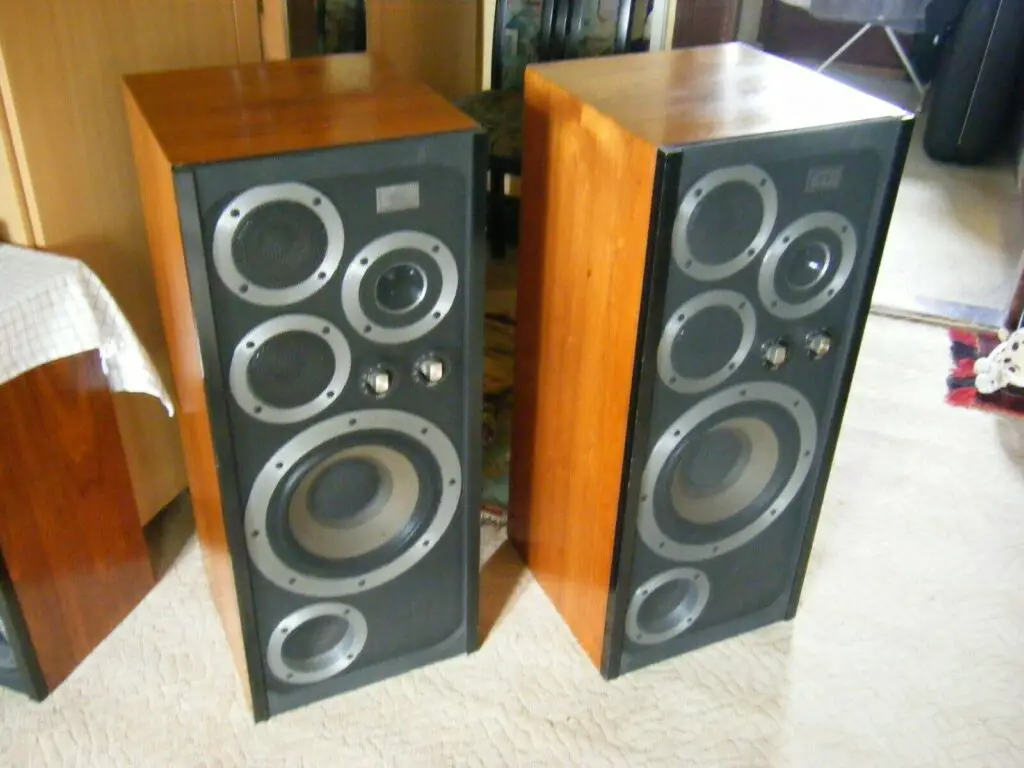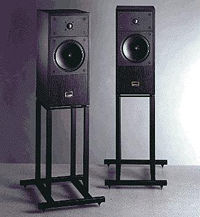This legendary electrostatic still has a magical quality to it fifty-seven years after development began. In comparison to other loudspeakers of the time, the ESL-57 provided excellent clarity because to its mix of superb sound quality and attractive appearance. Its outstanding transparency and speed drew the attention of BBC engineers, who quickly adopted it as a reference monitor. Many people consider this loudspeaker to be one of the greatest transducers ever manufactured, and it has a large following.
Peter J. Walker created the Acoustical Manufacturing Company Ltd. in 1936, but the company was forced to relocate from London to Huntingdon in the middle of World War II when its factory was attacked. The business renamed itself QUAD, short for ‘Quality Unit Amplifier Domestic,’ and shifted its concentration to the domestic audio market after the war. In 1950, the business launched its first loudspeaker, the CR corner ribbon, in addition to valve pre- and power amplifiers. This was a unique hybrid design that combined a Goodmans Axiom 150 cone mid/bass unit with an Acoustical electromagnetic ribbon loudspeaker for higher frequencies.
Peter Walker got to work on the ESL-57 full range electrostatic as soon as he could. Each panel was an electrostatic transducer constructed of treated polyethylene terephthalate (commonly known as Mylar) film stretched over a timber frame, essentially a huge wooden frame into which three panels were screwed. The film was coated with a somewhat electrically conductive paste and sat between two stators, each of which got a very high voltage, effectively ‘shaking’ the film and causing the sound to be produced as the charge changed. A single treble panel sat between and somewhat behind two bass panels on each side of the ESL. The transformer was hidden below these, towards the bottom of the back of the frame. This arrangement gave it its distinctive planar design, complete with a protective metallized grille.
Because of the lightness of the Mylar sheet, the sound produced had superb transients and little coloration. This was enhanced even more by the lack of a traditional cabinet with its boxy distortions, which resulted in a superbly linear bass that didn’t boom down to roughly 45Hz. Even now, the original Quad electrostatic sounds fantastic in its own right, with remarkable musical intelligence and the ability to dish it up in such a straightforward manner. It’s best described as a large open window through which you can look. It’s not one of those ‘character speakers,’ like a classic JBL or B&W; instead, it simply lets the music float around you in a pleasant, genteel, matter-of-fact but captivating manner.
It has shortcomings, like all loudspeakers, but its flaws are simpler for the human brain to tune out than others. Its performance at the extremities of the frequency spectrum demonstrates why nearly all speaker manufacturers choose for boomy boxes with chaotic moving coil transducers; both bass and treble are limited. The bass, such as it is, is rather good, being tuneful, tight, supple, and flowing. It’s simply that there isn’t much of it, and it becomes uncomfortable as soon as you start playing bass-driven rock songs. When played at higher listening levels, it’s not horrible, but it’s weak and a touch asthmatic. Treble is also lacking — what little there is is lovely and crisp and even, but there isn’t much to look at. The treble on the ’57 is said to go up to 17kHz, but anything above 11kHz isn’t worth getting excited about. This removes the impression of air from some recordings, which is why a supertweeter is a useful addition…
A completely functional ESL-57’s primary flaw is its sound pressure level, or lack thereof. It just cannot handle monster solid-state amplifiers as well as current speakers. At low listening levels, the speaker has a tendency to break apart, or at the very least sit on dynamic transients. When pushed hard enough, the stators ionize the air and spark through the Mylar sheet, causing it to arc. This will quickly damage the panels, and despite the fact that Quad eventually added protection circuitry, it was one of the reasons the Beeb switched to other monitor speaker solutions. It’s also the reason why many ESL-57 fans, including SME’s late Alastair Robertson-Aikman, used stacked pairings. By having four speakers instead of two, the speaker can move a lot more air in a much more comfortable manner.
When you find the ‘sweet spot’ in the room, the soundstage comes into sharp focus like few others. Suddenly, the entire music rises to envelop you, and you feel so close to it that the whites of the musicians’ eyes can be seen. Everything is so open and natural, and the outcome is a fantastically enjoyable listen. The Quad Electrostatic excels at these core competencies of transparency, openness, and insight, which means the brain has to work much less hard than when listening to most box speakers, which cause fatigue and distract the listener from the musical performance with their constant booming, banging, and clanging. It’s a thrill to hear the lovely, all-of-a-piece sensation of a well-placed pair of ’57s.
The most difficult part of owning a pair of Quads is finding a room big enough to get the most out of them. They emit sound both forwards and backwards, which is why you should place them far out into the room, away from the back wall, which reflects back waves. They’ll be able to breathe again, imaging better and delivering bigger volumes with ease, and the midband will clear up well as well. They’re a particularly difficult load to drive, so single-ended triode tube amps with weak knees need not apply!
Later Quad ESL speakers enhanced power handling, low bass and high treble performance, as well as a cleaner, tighter sound – but the original ’57 still has something to offer. A well preserved or precisely rebuilt pair will provide a marvelously unified sound that is musically communicative in a way that no other loudspeaker can match. It immerses you in the music, yet does it in such a natural and unobtrusive manner that you can’t stop listening. It is, of course, a design classic in its own right, and one of the most unique things of the twentieth century — not just for what it was, but also for what it can still achieve now.
Used pricing for a half-decent and well-preserved pair with sequential serial numbers start at around £500 for a half-decent and well-preserved pair with sequential serial numbers. However, at this price, you should consider having the panels repaired and the electronics serviced. One Thing Audio is by far the best place I’ve come across for refurbishing and/or upgrading every aspect of the speaker; prices range from roughly £150 to £1,500 depending on the work you want done. To conclude, a completely modded One Thing Quad ESL-57 is one of the best loudspeakers I’ve ever heard, with breathtaking clarity, speed, and rhythm.







